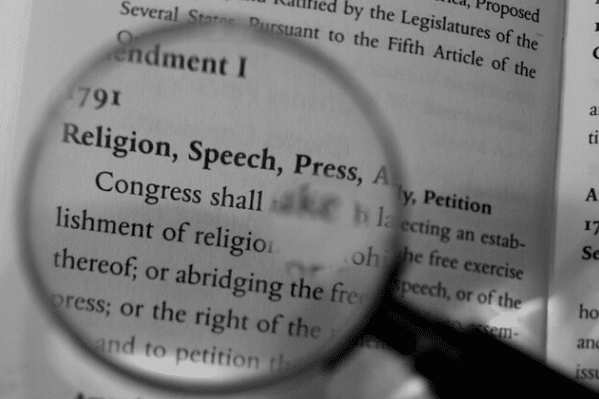LSAT Reading Comprehension Tips | Our Guide To Improving Your Exam Score
The LSAT is one proof that aspiring lawyers have something special to willingly undertake such an immensely challenging exam. But almost every popular lawyer since the 1950s has taken and passed the LSAT. It is a rite of passage for those pursuing a legal education.
If you're one of the thousands of students currently preparing for the upcoming LSAT cycles, not only do you need good prep books, you must also master all five LSAT sections.
The first three sections ("Arguments," "Logic Games," and "Reading Comprehension,") are all multiple-choice questions. Meanwhile, the final two sections include an unscored experimental section and an essay-writing.
Because each of these LSAT sections are equally important, we'll focus on just one for this post: the Law School Admission Test Reading Comprehension section. Simply put, this section judges how well you can understand the dense scholarly text, find relevant information within the content provided, and determine the main ideas of passages and pick the correct answers to the questions..
Read on for more LSAT reading comp tips...
Best Tips for LSAT Reading Comprehension
The Law School Admission Test reading comprehension section can be intimidating to many people. There are four passages to read and understand in this section. You then have to answer the 27 multiple-choice questions within 35 minutes period.
It can be the time pressure to determine the correct answers. Or the fact that the passages are dense and expository texts that layman would find hard to understand. Whatever reason you're feeling anxious about this section, one way to combat this fear is to prepare for it with the following advices for reading ability:
Know the Passage Structure

You don't have to be an expert at everything under the sun to pass the LSAT. However, you must at least understand what the passage is all about. One of the most effective Law School Admission Test reading comprehension strategies involves identifying passage structure to know the correct answers.
You can do this by pinpointing main ideas from supporting ideas, or facts from opinions. Marking transitional words like "however" or "although" also give you a clue what the passage is trying to convey.
Spaced repetition and rereading
If you're preparing for the LSAT and need information on how to improve reading retention, don't be ashamed. It is absolutely normal to not remember what we've read after a few months or years. Humans, in general, only retain a fraction of information they learned the first time.
But with rereading and spaced repetition, you can change this. The brain initially stores info within its long-term memory, but it is temporary. However, if you revisit the info by rereading or adding new information, the brain builds a structure for it and makes the information permanent.
You can use the concept of spaced repetition when answering LSAT's Reading Comprehension section.
Returning to the passage

Here's a trick you should remember when you're confused about the passage question: the wrong answers make up nonsense words that sound correct to fool you into thinking the passage actually stated them.
But if you returned to the passage and tried to spot a line reference that could prove the answers to be right or wrong, you'd be amazed at how quickly you can answer passage questions in minutes.
Like the two LSAT reading comp tips above, practicing how to identify passage structure, rereading back to the passage, and recognizing line references are skills and the strategy you can use to prove or eliminate answer choices.
Think About the Authors main Point
You won't know how to get better at reading ability if you read the passage of LSAT authors literally.
Know that these authors always have a reason and specific approach for stating what they stated. Even if they seemed clearly and specific for one side, then backtracks a bit and ends their passage lukewarm to the view they've been trying to prove, this was done for a reason.
When you undergo Law School Admission Test reading comprehension practice, try to find the authors' main point first before figuring out the answers. Once you've defined this important detail, you'll be able to understand the passage a lot better and answer passage questions within minutes.
Take notes as you read
Some test takers finds note-taking an effective way of retaining information. By writing down 3 to 5 keywords per paragraph, you'll be able to recall information more easily.
And since the LSAT reading comp section is also a timed section, anything to save time is much appreciated.
Don’t skim
Skimming is one of the worst mistakes test takers can do when tackling the reading comp section.
Imagine reading only a couple of sentences here and there per passage. Would you be able to understand the entire point of the passage? How will you be able to identify subtle confusing-tactics and answer the questions if you rush through reading the passage before answering them?
You might be able to answer all questions and pick the right answer from the answer choices in time, but skimming the passage doesn't guarantee you'll answer them correctly.
Keep in mind that Details support Functions
As mentioned above, there is always a reason why an LSAT passage author says what he/she says.
If a question asks you why an author included a particular detail from the passage, always go by the rule that "all details of a passage are used for supporting the function of that paragraph." Meaning, you have to identify the function of a sentence or paragraph where that detail is found, before you can answer some of the passage questions.
If you are still perplexed by the passage and cannot get to a resolution and determine the answers yet, refer back to the passage and identify the authors’ main idea again and think about how each paragraph fits into the authors’ main idea.
Reread, look and read a passage structure, and take notes until you're able to fully understand the passage before answering the questions on a test day.
Look for the big picture, not the details
When it comes to reading ability, training yourself with free LSAT resources to look at the big picture will serve you well.
Ask yourself these questions:
- How does this paragraph fit into the author's main idea?
- What is the author's view of the topic? (Sometimes, you'll find it hard to look for an author's voice, simply because he/she doesn't have one)
- How does the author develop his/her opinion of the topic?
- If the author suddenly changes his/her tone, does it mean his/her opinion changed as well?
It is important to understand the passage as a whole first, then go back to reread the smaller details.

Keep an eye out for concessions
Concessions confuse many LSAT-takers about the passage author's main idea. This is understandable because authors who do this usually have strong opinions about something and spend the passage’s majority to argue for it, and suddenly make a concession to the opposing side.
It's always an unexpected twist when this happens. And since it weakens the author's own argument, many examinees misconstrue this as a real change of heart. Unfortunately, the author may just have noted that the opposing side has valid arguments, but his/her conclusion was still the original idea supported right from the start.
Reading Comprehension Passage Types
The passages fall under four general categories: humanities, law, social sciences, and natural sciences. A fifth type is called "paired passages," which refers to a pair of passages by two different authors.
Out of all these passage types, it is the paired passages and humanities passages that cause much of the anxiety among LSAT-takers. Here's why:
Paired Passages
The LSAT Reading Comprehension will always include at least one “paired passages.”
When you read the "paired passages," the first passage usually deals with a simple subject matter, but the second passage is longer, denser and deals with more difficult topics.
This part is the most intimidating of all the LSAT Reading Comprehension question types not only because of its length, but because you have to compare and contrast the passages to answer the questions correctly.
Humanities Passages
These passages explore arts and literature topics. As such, you may read and interpret poetry, plays and other written works of art. You might even try to explore the meanings of songs, paintings or other similar arts.
There are no effective reading comp tricks to familiarize yourself with the arts, except for doing a lot of reading, watching documentaries, and actually becoming interested in humanities.
LSAT Reading Comprehension: The Summary
Reading retention is all about what you focus on as you read. The best strategy I could give you on how to improve reading ability is to practice, practice, practice.
This LSAT section is similar to the writing section. You really can't prepare for it like ordinary tests. However, if you master the skills and strategy required for identifying passage structure, differentiating the author's main ideas from supporting ones, looking at the big picture, and following the information above, you'll be able to develop good reading habits and improve reading ability.
What’s great about practicing effective reading ability for the LSAT? You’ll use this much-needed skill throughout your legal profession and lay the foundation for proper reading ability even in your day-to-day life.
LSAT Reading Comprehension FAQs:
1. How do I prepare for reading comprehension LSAT?
To master the comprehension section of the LSAT:
1. Read slowly and think about each paragraph after you read it.
2. Take notes as you read.
3. Summarize as you go.
4. Think about the authors' main point.
5. Understand the questions.
2. How to Approach Law School Admission Test Reading Comprehension Questions?
Your goals when encountering the comprehension questions needs to be the following:
First, discover the gist with the question—zero in on the most crucial perception of what's being asked.
Anticipate answers wherever you can. Lastly, cross out wrong answers that won't fit the larger picture of precisely what the passage is all about.
3. How to Read the Passages Effectively?
A good standard strategy could be to glance over the related questions prior to studying the 1st passage.
Quickly look into the information blurb that comes from the very beginning of the passage.


